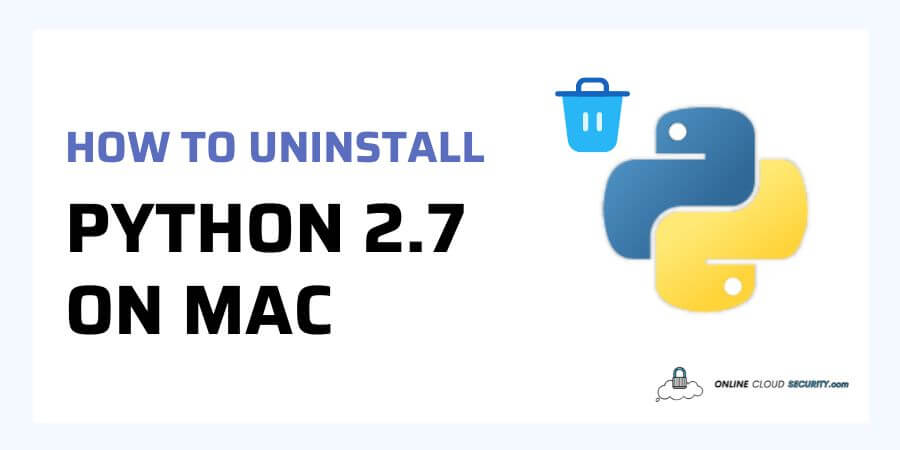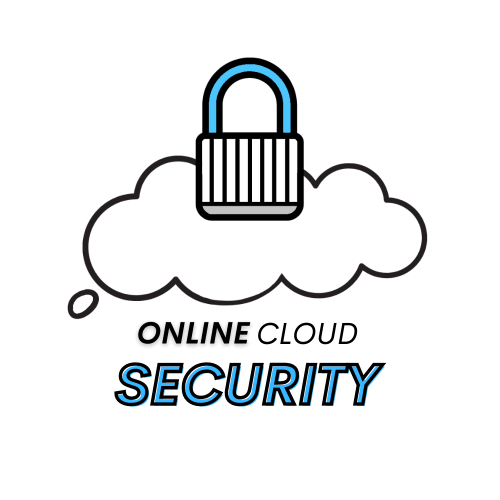
Dave Miller – Tech Enthusiast & Security Expert – July 23th, 2022

Apple has clarified that Python 2.7 gets no longer supported with macOS 12.3, and now you want to know how to uninstall Python 2.7 on Mac; I got this guide for you. The interest in Python 3 libraries is growing while that for Python 2 libraries is decreasing. Not to forget that Python 2 is more than 20 years old, even Python 2.7 is no longer getting updates, and support got terminated in 2020. The Python programming language got updated with Python 3 in December 2008. Depending on how you installed Python 2.7 initially, you may need to uninstall it differently.
For a detailed explanation of how to get rid of Python 2.7 and which components you should not get deleted, continue reading the article.
Python is pre-installed on macOS and is still present for use with older programs. If you want to take advantage of all recent updates from contributors, consider upgrading to Python 3.0. You might be thinking of deleting or getting rid of Python 2.7. But before you move on to it, there are a few things to remember.
The pre-installed Python that Apple has given shouldn’t get removed since doing so might break your operating system. The Python Framework from Apple usually gets installed in
/System/Library/Frameworks/Python.framework.
If you delete it, several internal scripts required by macOS will stop working, which might damage your entire operating system. Or else, if you want to uninstall any third-party Python framework that you might have installed from python.org. You can continue reading instructions on how to uninstall Python 2.7 on Mac
Note: Python 3 is not included with macOS as Python 2 was. If you wish to use Python 3 on endpoints, you must install it manually.
Continue reading to learn steps of how to uninstall Python 2.7 on Mac
Note: Please take comfort that the actions I have listed below won’t affect the Python 2.7 that Apple provides. Instead, they merely get rid of a third-party Python framework, such as those installed via python.org installers.
Before you start following the below method, you should know where the files of Python will be when installed in the first place. Mainly three things you need to keep in mind
A folder will get created in the Applications directory. The Build Applet tool, IDLE, and PythonLauncher should all get included in the folder.
Python.framework that got installed in the library, as discussed previously.
Several symlinks to the Python are present in the /usr/local/bin directory, which you should keep in mind.
To get rid of Python completely, you are required to remove all these items by following the below methods. Follow the steps below,
Files from Application Directory
Step #1: Go to Finder and choose Applications from the left-hand menu.
Step #2: Find the installed Python version folders you want to remove
Step #3: Right-click to move it to the trash, then navigate to the trash directory. Select Delete Immediately with a right-click on the folder.
Note: Before beginning the file removal procedure, launch the Activity Monitor and end all Python-related processes under the Memory tab.
Step #4: The task is incomplete because the built-in Python distribution might not appear in the Applications folder. Therefore, you must delete the extra file using the terminal. Press command and space to bring up Spotlight Search and choose “terminal” to open. Alternatively, you might open Finder, navigate the /Applications/Utilities folder, and double-click Terminal.
Files from Framework
Step #1: Once it’s open, use the following command to delete the Python framework:
sudo rm -rf /Library/Frameworks/Python.framework/Versions/2.7
Python Symbolic Links Removal
Step #1: Python files and directories have got deleted now. Removing the symbolic links in /usr/local/bin that point to this Python version is necessary. To view all the links, enter the following command in the terminal.
ls -l /usr/local/bin | grep ‘../Library/Frameworks/Python.framework/Versions/2.7’
Step #2: Use the following commands to access the directory and delete any broken symlinks to erase all of the links.
cd /usr/local/bin/
ls -l /usr/local/bin | grep ‘../Library/Frameworks/Python.framework/Versions/2.7’ | awk ‘{print $9}’ | tr -d @ | xargs rm
Python has now got removed from your system. You may now download and install the latest version without getting worried about the old one
Bonus Tip: Using Homebrew
Homebrew is a free, open-source complete software management solution that simplifies program installation on both Linux and Apple’s macOS. It makes it simple to locate symbolic links by using the command, which is more advised than manually looking for links to delete Python 2.7.
Homebrew may get downloaded from the official website, where you can also find instructions for installing Homebrew on supported platforms. After installation, the following commands may get used to locate and remove all the links.
brew doctor
brew cleanup
The Python Software Foundation, a nonprofit, is the proprietor of the Python programming language. In addition to supporting and facilitating the creation of a varied and global community of Python programmers, the Python Software Foundation’s objective is to promote, safeguard, and develop the Python programming language.
And whether you’re an expert programmer or a beginner, Python is known for being strong, quick, and simple to learn. Python got created under an open source license that has been accepted by OSI, enabling it to be freely distributable and used, even for commercial purposes. There are countless options with Python, thanks to both the codebase and the community-contributed modules.
Python 2’s support stopped on January 1, 2020. Everyone should switch to Python 3 as soon as possible, according to official statements from the Python Software Foundation and Apple. This version got primarily provided to address Python 2 issues. Even though this warning is ongoing and Python 2.7 is still in use, many users have not upgraded. Furthermore, it becomes challenging for the contributors to contribute if many users continue to use Python 2. They cannot develop better tools using Python 3’s beneficial new features. Therefore, switching to Python 3 is advised for everyone right now.
Most volunteers won’t contribute to the patch of Python 2 even if they find any serious security flaws. Additionally, Python 3 does not support Python 2 backward, so you might need to modify your code. So, you must now begin converting your Python 2 code to Python 3. Once you’ve determined which scripts still use Python 2.7, you may convert them using various tools. Some of them are
Deleting Python 2.7 is not tough talk, as you have seen above, with steps on how to uninstall Python 2.7 on Mac. Though some of the older OS versions will include particularly outdated versions of Python, keep in mind that Python has long got installed on the Mac. Several OS components use Python scripts, which haven’t changed much over the years. It will damage several internal scripts that macOS depends on if you try to delete it. You will be alright if you adhere to the guidelines above.
Regarding transition, when utilizing Python 3, it’s crucial to understand how your code will change and what to watch out for while coding. You should get familiar with the modifications Python 3 brings to Python 2, and you will be better able to take care of everything.
**Onlinecloudsecurity.com is a participant in the Amazon Services LLC Associates Program, an affiliate advertising program designed to provide a way for websites to earn advertising revenues by advertising and linking to Amazon.com and affiliated sites. As an Amazon Associate we earn affiliate commissions from qualifying purchases.**

Dave Miller is an IT Consultant for Online Cloud Security and has over 7 years of experience in the Information Technology space. He also specializes in repairing laptops & computers. In his spare time, he loves to talk about new technologies and hosts monthly IT and Cyber Security meetings in the Houston area.
Click any button down below to share this article on the following channels:

Online Cloud Security is here to recommend you the most secure devices, from laptops to smartphones, we only want to provide you with products that we have tested and used ourselves for online security. Every product that we recommend is heavily inspected and tested for security against hackers, viruses, malware, and any other intruders that may want to steal your information.

Online Cloud Security is here to recommend you the most secure devices, from laptops to smartphones, we only want to provide you with products that we have tested and used ourselves for online security. Every product that we recommend is heavily inspected and tested for security against hackers, viruses, malware, and any other intruders that may want to steal your information.
Your Trusted Source for Online Security